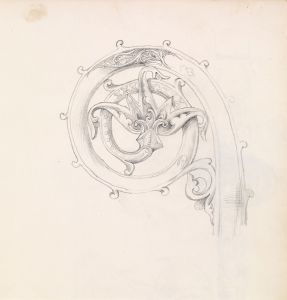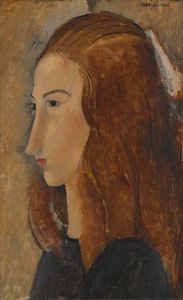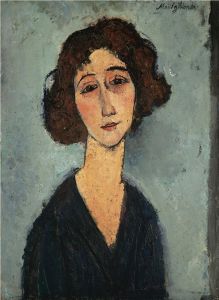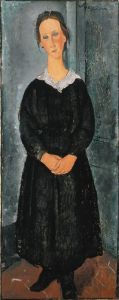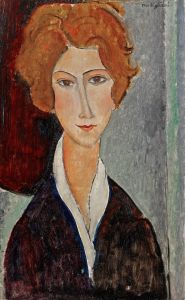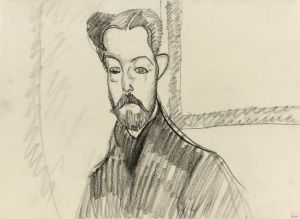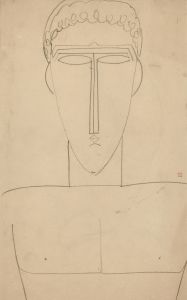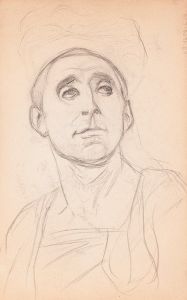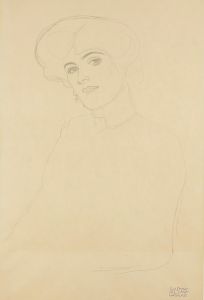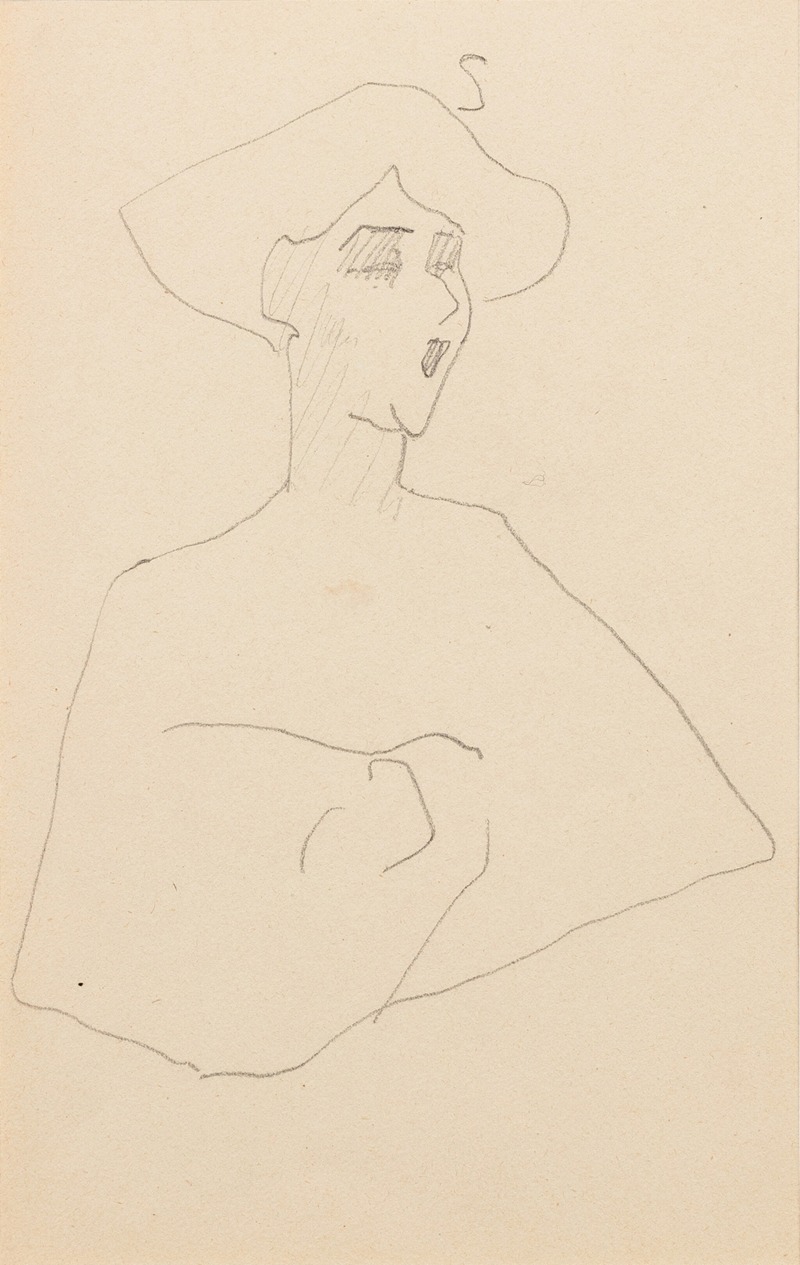
Tête et buste de femme
A hand-painted replica of Amedeo Modigliani’s masterpiece Tête et buste de femme, meticulously crafted by professional artists to capture the true essence of the original. Each piece is created with museum-quality canvas and rare mineral pigments, carefully painted by experienced artists with delicate brushstrokes and rich, layered colors to perfectly recreate the texture of the original artwork. Unlike machine-printed reproductions, this hand-painted version brings the painting to life, infused with the artist’s emotions and skill in every stroke. Whether for personal collection or home decoration, it instantly elevates the artistic atmosphere of any space.
"Tête et buste de femme" (Head and Bust of a Woman) is a painting by the Italian artist Amedeo Modigliani, renowned for his distinctive modernist style characterized by elongated forms and simplified features. Modigliani, active during the early 20th century, is celebrated for his portraits and nudes, which often reflect a synthesis of influences from African sculpture, Renaissance art, and the avant-garde movements of his time.
This particular work, "Tête et buste de femme," exemplifies Modigliani's signature approach to portraiture. The painting depicts a woman with an elongated neck and stylized facial features, including almond-shaped eyes, a long nose, and a small mouth. These characteristics are hallmarks of Modigliani's artistic language, which sought to convey emotional depth and individuality through abstraction and simplification rather than strict realism. The subject's pose, with her head slightly tilted and her bust prominently displayed, conveys a sense of quiet introspection and elegance.
Modigliani often painted individuals from his social circle, including friends, lovers, and patrons, though the identity of the woman in this painting is not definitively known. Like many of his works, "Tête et buste de femme" reflects his interest in capturing the essence of his subjects rather than their exact likeness. The muted color palette, dominated by earthy tones and soft contrasts, enhances the timeless and introspective quality of the piece.
The painting was likely created during Modigliani's time in Paris, where he lived and worked from 1906 until his death in 1920. Paris, during this period, was a hub of artistic innovation, and Modigliani was part of a vibrant community of artists and intellectuals. Despite his association with the École de Paris, Modigliani's style remained uniquely his own, resisting direct alignment with movements such as Cubism or Fauvism.
Modigliani's career was tragically short, as he died at the age of 35 from tuberculosis. His work, however, gained significant recognition posthumously, and he is now regarded as one of the most important artists of the 20th century. "Tête et buste de femme" is a testament to his ability to blend modernist abstraction with a profound sense of humanity, making his portraits deeply resonant and enduringly influential.
The provenance and current location of "Tête et buste de femme" are not widely documented in public records, and further details about the painting's history remain limited.






